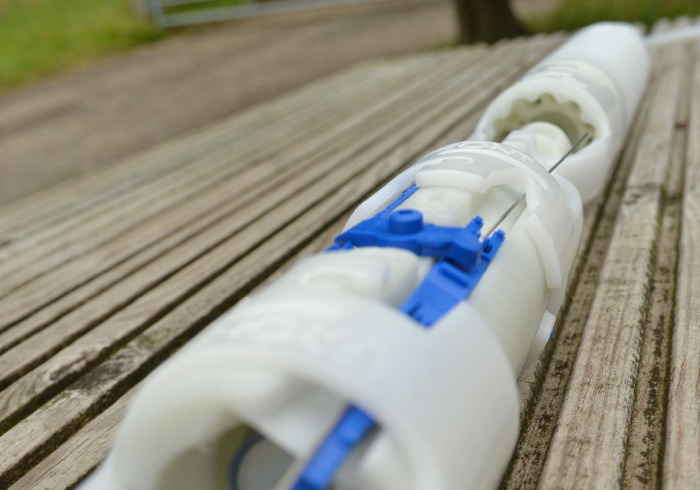

On trend for a simplified, accurate sampling process

October 7, 2016
In our industry every now and again something comes along and we should sit up and take notice. Telemetry that revolutionises and makes accessible remote monitoring sites; handheld water quality meters and now, passive samplers.
It’s difficult to say something is new, radical, innovative and groundbreaking: most of the times it is a natural progression or development. But if from a technique that is repetitive but vitally important, you succeed to make it easier, cheaper and more effective, you can assume you have made an important step forward, although we’re not talking about the ‘Post-it’ here!
No doubt you have heard of the groundwater sampling techniques known as passive sampling or ‘no-purge’ sampling? In America it has increasingly gained acceptance to the extent that it has even been incorporated in some standards since it was first introduced some 10 to 15 years ago and, at Van Walt, we believe it’s only a question of time before it gains ground as a recognized, reliable and economical groundwater sampling choice for hydrologists and groundwater professionals throughout the UK and Europe.
Passive Sampling is based on the principle of deploying a device (grab, diffusion, adsorption) in a well and leaving it in place for the entire duration between a sampling event. The idea behind it, and research shows, that a sample derived in this way can give a true representation of the state of the water surrounding the well. The advantage is that these techniques produce no purge water at all, they show less variability between sampling events, cause no turbidity and in general the “per sample” costs is substantially reduced. They are particularly useful in deep or low recharge wells.
Passive sampling devices tend to be easy to deploy and so can save time and money. With further benefits like less equipment on site, no waste disposal of purge water, collects a sample from the same depth for consistency of results – it’s easy to see why they are gaining acceptance. In addition to time and cost savings, passive samplers represent ‘greener’ technology.
As you can tell we’re taking passive sampling very seriously and we’re working to establish its acceptance among the groundwater community. After much research we have hung our colours to the Snap Sampler from ProHydro, which we believe has many advantages. Designed, developed and manufactured by a professional, in fact someone who worked for the groundwater regulator in the USA, the Snap Sampler has already established a proven track record.
As part of our programme to promote passive sampling I’m about to embark on a study of the acceptability, as a method for routine groundwater sampling, of passive or no-purge techniques in our direct markets (UK, Ireland, Spain, New Zealand). You can have your say along with other industry experts and participate in our survey – we really want to know what you think.
Kim Robertson
Intern, Van Walt Ltd
You might also be interested in...
Van Walt Guidelines for sampling for PFAS in Groundwater
November 13, 2024We need to make clear, that at the time of writing, there are no ISO or EN standards which deal with the sampling of groundwater for PFAS.
Read MoreSpot measurement v. continuous environmental monitoring
August 25, 2023Environmental monitoring has developed considerably over the years. From the time when a consultant went out monthly or quarterly with a dip tape to monitor the groundwater level in a borehole, wind forward...
Read MoreMeasuring Nitrates (NO3, NO3-N) in the field
June 20, 2023The interest in Nitrates is nothing new. One way or another we have been measuring them for half a century.
Read MoreVan Walt Environmental Equipment
A small selection of our environmental equipment